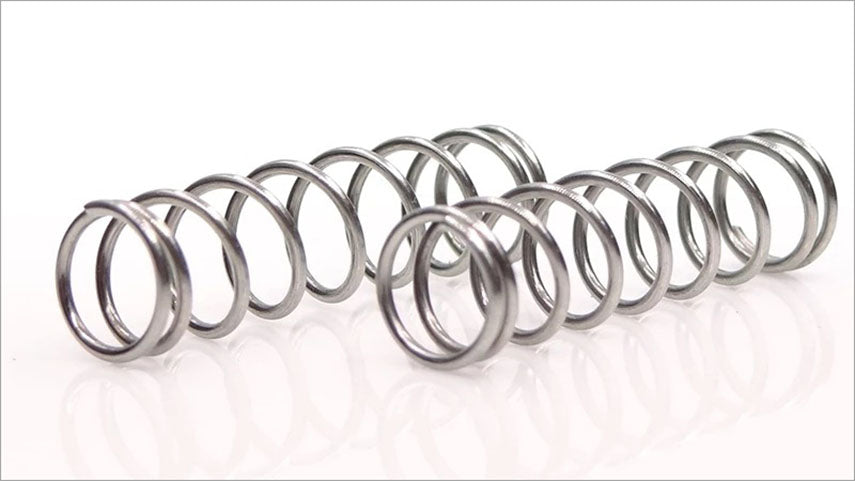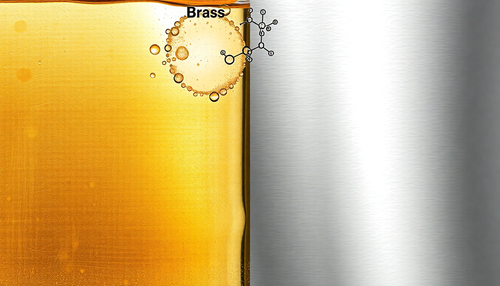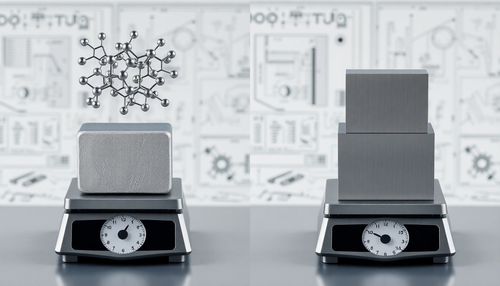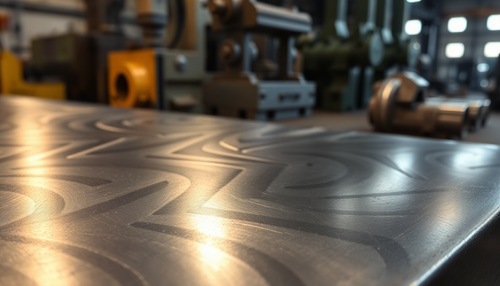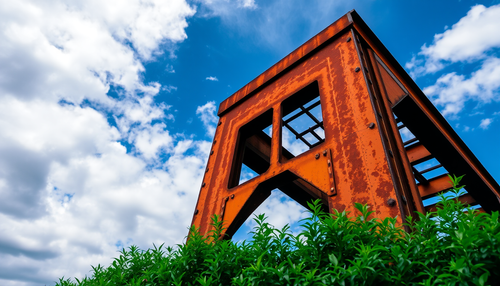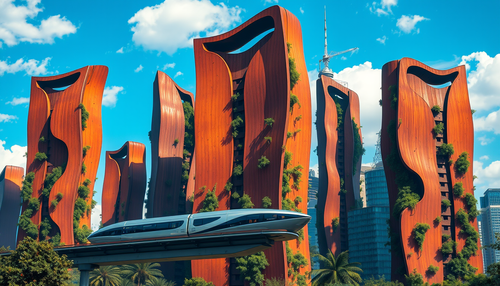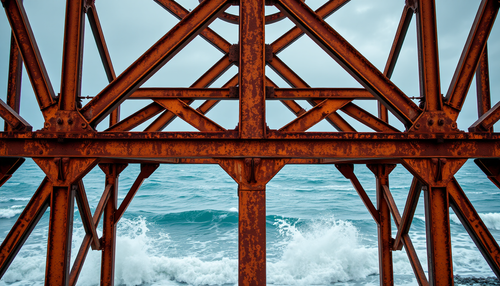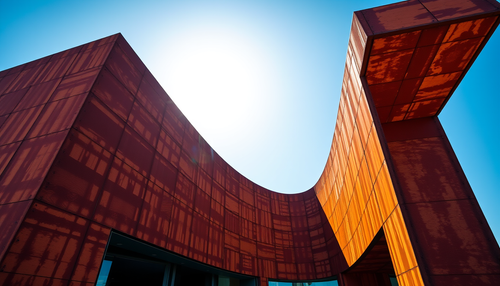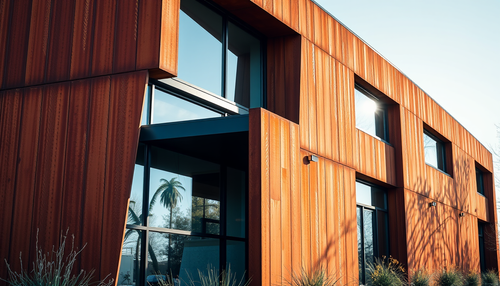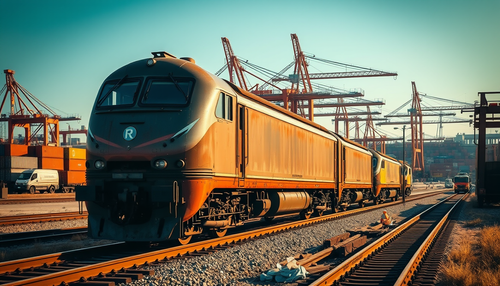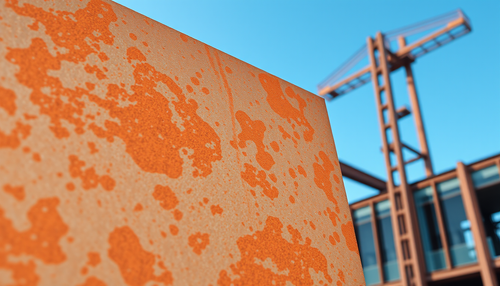
AISI type 302 stainless steel (UNS S30200)
Type 302 stainless steel is basically a higher carbon version of type 304, a variant of 18-8 stainless steel. Its carbon content is ≤0.15% and the minimum chromium content is only 1% less than 304. Grade 302 stainless steel spring wire (specified in ASTM A313) has high heat resistance and good corrosion resistance, and has excellent spring performance in full hard or tempered condition. The main difference between SS 302, 304 and 304L is the carbon content, so there is a difference in the amount of carbide precipitation that can occur in the heat affected zone (HAZ) after heating and cooling cycles are encountered in welding. The P content of type 303 and 303Se is ≤0.20%, plus 0.15% Se or S for free machining. These elements are not conducive to weldability and can cause severe hot cracking of the weld metal. AISI 301 has lower nickel and chromium content, therefore the work hardening rate is higher than AISI 302.
Datasheet and specifications
The following tables and lists provide the data sheet and specifications of 302 stainless steel, including chemical composition, physical and mechanical properties, heat treatment, welding, etc.
Chemical composition
The chemical composition of the SS 302 material is listed in the following table.
Datasheet 1, The table below shows the chemical composition of AISI 302.
| Composition of type 302 stainless steel,% | |||||||||||
| ASTM | AISI (UNS) | C, ≤ | Yes, ≤ | Mn, ≤ | P, ≤ | S, ≤ | Cr | No | N, ≤ | Mo, ≤ | Cu, ≤ |
| ASTM A313/A313M | 302 (UNS S30200) | 0.12 | 1.00 | 2:00 | 0.045 | 0.03 | 17.0-19.0 | 8.0-10.0 | 0.1 | – | – |
| ASTM A276/A276M; ASTM A479/A479M; ASTM A580/A580M; ASTM A314; ASTM A473 ASTM A959; |
0.15 | 1.00 | 2:00 | 0.045 | 0.03 | 17.0-19.0 | 8.0-10.0 | 0.1 | – | – | |
| ASTM A240/A240M; ASTM 666; SAE J405 |
0.15 | 0.75 | 2:00 | 0.045 | 0.03 | 17.0-19.0 | 8.0-10.0 | 0.1 | – | – | |
| SAE AMS 5688 | SAE 30302 | 0.15 | 1.00 | 2:00 | 0.04 | 0.03 | 17.0-19.0 | 8.0-10.0 | – | 0.75 | 0.75 |
Grades:
- ASTM A313/A313M : Stainless Steel Spring Wire
- ASTM A276/A276M : Standard Specification for Stainless Steel Bars and Shapes
- ASTM A240/A240M : Chromium and chrome-nickel stainless steel plates, sheets and strips for pressure vessels and general applications
- ASTM A580/A580M : Stainless Steel Wire
- ASTM A479/A479M : Stainless steel bars and shapes for use in boilers and other pressure vessels
- ASTM A959 : Standard Guide for Specification of Harmonized Standard Grade Compositions for Wrought Stainless Steels
- ASTM A473 : Stainless Steel Forgings
- ASTM A314 : Standard Specification for Stainless Steel Billets and Bars for Forging
- ASTM 666 : Annealed or cold worked austenitic stainless steel sheet, strip, plate and flat bar
- SAE J405 : Chemical Composition of SAE Forged Stainless Steels
- SAE AMS 5688 : Steel, corrosion resistant, 18Cr-9Ni wire (SAE 30302) Spring quench
Properties of AISI 302 stainless steel
The data sheets below list the properties of grade 302 stainless steel, including physical properties and mechanical properties.
Physical properties
The physical properties of type 302 stainless steel are listed in the table below, such as density, melting point, specific heat, electrical resistivity, modulus of elasticity (modulus of elasticity), thermal conductivity, and coefficient of thermal expansion (CTE).
Datasheet 2, properties of AISI 302 stainless steel – 1.
Grades:
- 10 -6 ·K -1 = 10 -6 /K
- 1Ω mm²/m = 1 μΩ m
- 1 g/cm3 = 1 kg/dm3 = 1000 kg/m3
- 1 GPa = 1kN/mm2
- 1 MPa = 1 N/mm2
| Type 302 Physical Properties | |
| Density, g/cm3 (lb/in3) | 7.9 (0.289) |
| Melting point, °C (°F) | 1400-1420 (2550-2590) |
| Specific heat capacity, J/kg·K (Btu/lb ·°F) | 500 (0.12) at 20°C (68°F) |
| Electrical resistivity, μΩ·m | 0.72 at 20°C (68°F) |
| Conductivity, % IACS | 3 |
| Magnetic permeability | 1.02 (approximate) |
| Elastic Modulus (Modulus of Elasticity), Gpa (10 6 psi) | 193 (28) |
| Thermal conductivity, W/m·K (Btu/ft · h ·°F) | 16.2 (9.4) at 100°C (212°F) |
| 21.5 (12.4) at 500°C (932°F) | |
| Coefficient of thermal expansion (CTE), 10 -6 /K (μin./in. ·°F) | 17.2 (9.6) at 0-100℃ (32-212°F) |
| 17.8 (9.9) at 0-315℃ (32-600°F) | |
| 18.4 (10.2) at 0-538℃ (32-1000°F) | |
| Acoustic properties | |||||
| Material | Density (ρ) | Sonic speeds, 10 5 cm/s | Acoustic impedance | ||
| g/cm3 (lb/in3) | Vl | Vt | Against | (Zl) 10 6 g/cm2 · s | |
| Type 302 | 7.9 (0.29) | 5.66 | 3.12 | 3.12 | 4.47 |
| Vl- Longitudinal waves (compression); Vt- Transverse (shear) waves; Vs- Surface waves For longitudinal waves Zl = ρVl. |
|||||
SS 302 Mechanical Properties
The mechanical properties of AISI 302 stainless steel are given in the data sheet below, including tensile strength, yield strength, elongation, area reduction, Brinell and Rockwell hardness, etc.
Datasheet 3, Properties of Type 302 Stainless Steel Spring Wire – 2.
| ASTM A313 Stainless Steel Spring Wire Tensile Strength Requirements for Types 302 Class 1 and 304 | ||||
| Diameter (d), in. | Diameter (d), mm | Bending test, minimum number of bends | ksi | MPa |
| ≤0.009 | ≤0.23 | – | 325-355 | 2240-2450 |
| 0.009 |
0.23 |
– | 320-350 | 2205-2415 |
| 0.010 |
0.25 |
– | 318-348 | 2190-2400 |
| 0.011 |
0.28 |
– | 316-346 | 2180-2385 |
| 0.012 |
0.30 |
– | 314-344 | 2165-2370 |
| 0.013 |
0.33 |
– | 312-342 | 2150-2360 |
| 0.014 |
0.36 |
– | 310-340 | 2135-2345 |
| 0.015 |
0.38 |
– | 308-338 | 2125-2330 |
| 0.016 |
0.41 |
– | 306-336 | 2110-2315 |
| 0.017 |
0.43 |
– | 304-334 | 2095-2300 |
| 0.018 |
0.46 |
– | 300-330 | 2070-2275 |
| 0.020 |
0.51 |
– | 296-326 | 2040-2250 |
| 0.022 |
0.56 |
– | 292-322 | 2015-2220 |
| 0.024 |
0.61 |
– | 291-320 | 2005-2205 |
| 0.026 |
0.66 |
8 | 289-318 | 1995-2190 |
| 0.028 |
0.71 |
8 | 285-315 | 1965-2170 |
| 0.031 |
0.79 |
8 | 282-310 | [1945-2135 |
| 0.034 |
0.86 |
8 | 280-308 | 1930-2125 |
| 0.037 |
0.94 |
8 | 275-304 | 1895-2095 |
| 0.041 |
1.04 |
8 | 272-300 | 1875-2070 |
| 0.045 |
1.14 |
8 | 267-295 | 1840-2035 |
| 0.050 |
1.27 |
8 | 265-293 | 1825-2020 |
| 0.054 |
1.37 |
7 | 261-289 | 1800-1990 |
| 0.058 |
1.47 |
7 | 258-285 | 1780-1965 |
| 0.063 |
1.60 |
7 | 252-281 | 1735-1935 |
| 0.070 |
1.78 |
7 | 250-278 | 1725-1915 |
| 0.075 |
1.90 |
7 | 246-275 | 1695-1895 |
| 0.080 |
2.03 |
7 | 242-271 | 1670-1870 |
| 0.087 |
2.21 |
7 | 238-268 | 1640-1850 |
| 0.095 |
2.41 |
5 | 232-262 | 1600-1805 |
| 0.105 |
2.67 |
5 | 227-257 | 1565-1770 |
| 0.115 |
2.92 |
5 | 222-253 | 1530-1745 |
| 0.125 |
3.17 |
3 | 217-248 | 1495-1710 |
| 0.135 |
3.43 |
3 | 210-241 | 1450-1660 |
| 0.148 |
3.76 |
3 | 205-235 | 1415-1620 |
| 0.162 |
4.11 |
3 | 198-228 | 1365-1570 |
| 0.177 |
4.50 |
1 | 194-225 | 1335-1550 |
| 0.192 |
4.88 |
1 | 188-220 | 1295-1515 |
| 0.207 |
5.26 |
1 | 182-214 | 1255-1475 |
| 0.225 |
5.72 |
1 | 175-205 | 1205-1415 |
| 0.250 |
6.35 |
1 | 168-198 | 1160-1365 |
| 0.278 |
7.06 |
1 | 161-192 | 1110-1325 |
| 0.306 |
7.77 |
1 | 155186 | 1070-1280 |
| 0.331 |
8.41 |
1 | 150-180 | 1035-1240 |
| 0.362 |
9.19 |
1 | 145-175 | 1000-1205 |
| 0.394 |
10:00 |
1 | 140-170 | 965-1170 |
| 0.438 |
11.12 |
1 | 135-165 | 930-1140 |
| >0.500 | >12.70 | – | 130-160 | 895-1105 |
| When wire is specified in straightened and cut lengths, the minimum tensile strength shall be 90% of the values listed in the table. | ||||
| ASTM A313 Tensile Strength Requirement for SS302 Class 2 | ||||
| Diameter | Nominal cold drawn | Relieved stress | ||
| in. | mm | ksi (MPa) | ksi | MPa |
| 0.050-0.160 | 1:30pm-4:00am | 290 (2000) | 290-340 | 2000-2345 |
| Stress relieved at 800-850°F (430-455°C) for half an hour and air cooled. | ||||
| Mechanical Properties of ASTM A276 Type 302 Stainless Steel | ||||||
| ASTM | AISI (UNS) | Tensile strength, Mpa (ksi), ≥ | 0.2% yield strength, Mpa (ksi), ≥ | Stretch by 2 in. (50 mm), %, ≥ | Area Reduction, %, ≥ | Conditions |
| ASTM A276/A276M | 302, 302B, 304, 304LN, 305, 308, 309, 309S, 309Cb, 310, 310S, 310Cb, 314, 316, 316LN, 316Cb, 316TI, 317, 321, 347, 348 | 515 (75) | 205 (30) | 40 | 50 | Annealed, hot finished |
| 620 (90) | 310 (45) | 30 | 40 | Annealed, cold finished, diameter ≤ 1/2 in. (12.7mm) | ||
| 515 (75) | 205 (30) | 30 | 40 | Annealed, cold finished, diameter > 1/2 in. (12.7mm) | ||
| ASTM A240 Type 302 Mechanical Properties | ||||||
| ASTM | AISI (UNS) | Tensile strength, Mpa (ksi), ≥ | 0.2% yield strength, Mpa (ksi), ≥ | Stretch by 2 in. (50 mm), %, ≥ | Brinell hardness, HB, ≤ | Rockwell hardness, HRB, ≤ |
| ASTM A240/A240M | 302 (UNS S30200) | 515 (75) | 205 (30) | 40 | 201 | 92 |
| ASTM A473 SS302 Mechanical Properties | ||||||
| ASTM | AISI (UNS) | Tensile strength, Mpa (ksi), ≥ | 0.2% yield strength, Mpa (ksi), ≥ | Stretch by 2 in. (50 mm), %, ≥ | Area Reduction, %, ≥ | Conditions |
| ASTM A473/A473M | 302 (UNS S30200) | 515 (75) | 205 (30) | 40 | 50 | Annealed |
| ASTM A479 SS302 Mechanical Properties | ||||||
| ASTM | AISI (UNS) | Tensile strength, Mpa (ksi), ≥ | 0.2% yield strength, Mpa (ksi), ≥ | Stretch by 2 in. (50 mm), %, ≥ | Area Reduction, %, ≥ | Conditions |
| ASTM A479/A479M | 302 (UNS S30200) | 515 (75) | 205 (30) | 30 | 40 | Annealed |
| ASTM A580 Type 302 Mechanical Properties | ||||||
| ASTM | AISI (UNS) | Tensile strength, Mpa (ksi), ≥ | 0.2% yield strength, Mpa (ksi), ≥ | Stretch by 2 in. (50 mm), %, ≥ | Area Reduction, %, ≥ | Conditions |
| ASTM A580/A580M | 302 (UNS S30200), 302B (UNS S30215) |
620 (90) | 310 (45) | 30 | 40 | Annealed, cold finished |
| 515 (75) | 205 (30) | 35 | 50 | Annealed | ||
| Mechanical Properties ASTM A666 302 | |||||||
| ASTM | AISI type (UNS) | Conditions | Tensile strength, MPa (ksi), ≥ | 0.2% yield strength, MPa (ksi), ≥ | Elongation by 50 mm (2 in.), %, ≥ | Brinell hardness (HB), ≤ | Rockwell hardness (HRB), ≤ |
| ASTM A666 | 302 (UNS S30200) | Annealed | 517 (75) | 205 (30) | 40 | 201 | 92 |
| Full Hard | 1275 (185) | 965 (140) | 3 (<0.015 in.); 4 (≥ 0.015 in.) |
||||
| 1/2 Hard (Medium Hard) | 1035 (150) | 760 (110) | 9 (<0.015 in.); 10 (≥ 0.015 in.) |
||||
| 3/4 Hard | 1205 (175) | 930 (135) | 5 (<0.015 in.); 6 (≥ 0.015 in.) |
||||
| 1/4 (a quarter hard) hard | 862 (125) | 517 (75) | 10 (≤ 0.03 in.); 12 (> 0.03 in.) |
||||
| 1/8 Hard | 690 (100) | 380 (55) | 35 | ||||
| 302 plate, strip, sheet | 1/16 Hard | 585 (85) | 310 (45) | 40 | |||
| 302 flat bar | 620 (90) | 310 (45) | 40 (>0.030 in.) | ||||
Type 302 Stainless Steel Heat Treatment
- SS 302 annealing temperature is 1010-1120°C (1850-2050°F), recommended temperature is 1400°C (1900°F)
- Wire Furnace Temperature and Stress Relief Time: 345°C (650°F), 30 minutes.
- Typical strain relief temperature for SS302 steel spring wire: 425-480°C (800-900°F) based on 30 minutes temperature, only suitable for strain relief after winding and not valid for strain relief after shot peening. When the spring is used at high temperature, the stress relief temperature should be near the upper limit of this range to minimize relaxation during use. Otherwise, cooler temperatures are better.
- The typical forging temperature range of SS 302 is 925-1260°C (1700-2300°F).
Welding
SS 302 can be easily welded by friction welding, seam welding and flash welding process; arc welding not recommended. If a filler metal is required, E/ER308 or E/ER308L is recommended.
Heat resistance
Maximum air service temperatures
- Intermittent service: 870°C (1600°F)
- Continuous service: 925°C (1700°F)
Corrosion resistance
| Corrosion of AISI 302 stainless steel in a marine environment | |||
| AISI type | Average corrosion rate, mm/year | Average well depth, mm (mils) | Appearance |
| 302 | <2.5x10-5 | 0.03 (1.2) | Stained with rust stain on 10% of the surface |
Forms
AISI 302 stainless steel is widely used in industrial and architectural industries, such as stamping, spring steel, wire rope, metal mesh, woven wire mesh, screen mesh, stainless steel decorative mesh, perforated sheet metal, wire mesh, steel, metal strainer and strainer, steel washer, handrail, etc.
Equivalent material SS 302
Grade 302 stainless steel equivalent to European EN standard (Germany DIN EN, British BSI…), Chinese GB, ISO and Japanese JIS, etc.
| Material equivalent to AISI 302 | |||||||||||||||||||
| USA | European | China | Japan | ISO | Australia | India | Russia | Korea | |||||||||||
| Standard | Note (UNS) | Standard | Note | Standard | Name (Steel Number) | Standard | Name [UNS] | Standard | Note | Standard | Name (ISO number) | Standard | Note | Standard | Note | Standard | Note | Standard | Note |
| AISI, SAE; ASTM |
302 (UNS S30200) | SAE AMS 5688 | 18Cr-9Ni (SAE 30302) | EN 10088-1; EN 10088-2; EN 10088-3 |
X9CrNi18-9 (1.4325) | GB/T 1220; GB/T 3280 |
1Cr18Ni9; 12Cr18Ni9 (New designation); [S30210] |
JIS G4304; JIS G4304; JIS G4305 |
SUS302 | ISO 15510 | X9CrNi18-9 (4325-302-00-E) | ||||||||
| 302B (UNS S30215) | X12CrNiSi18-9-3 (1.4326) | 1Cr18Ni9Si3; 12Cr18Ni9Si3 (New designation); [S30240] |
SUS302B | X12CrNiSi18-9-3 (4326-302-15-I) | |||||||||||||||
Related material: Duplex 2205, 1.4541 (X6CrNiTi18-10), 6061 Aluminum, AISI 430, 1.4310 (X10CrNi18-8), 1.4301 (X5CrNi18-10)

